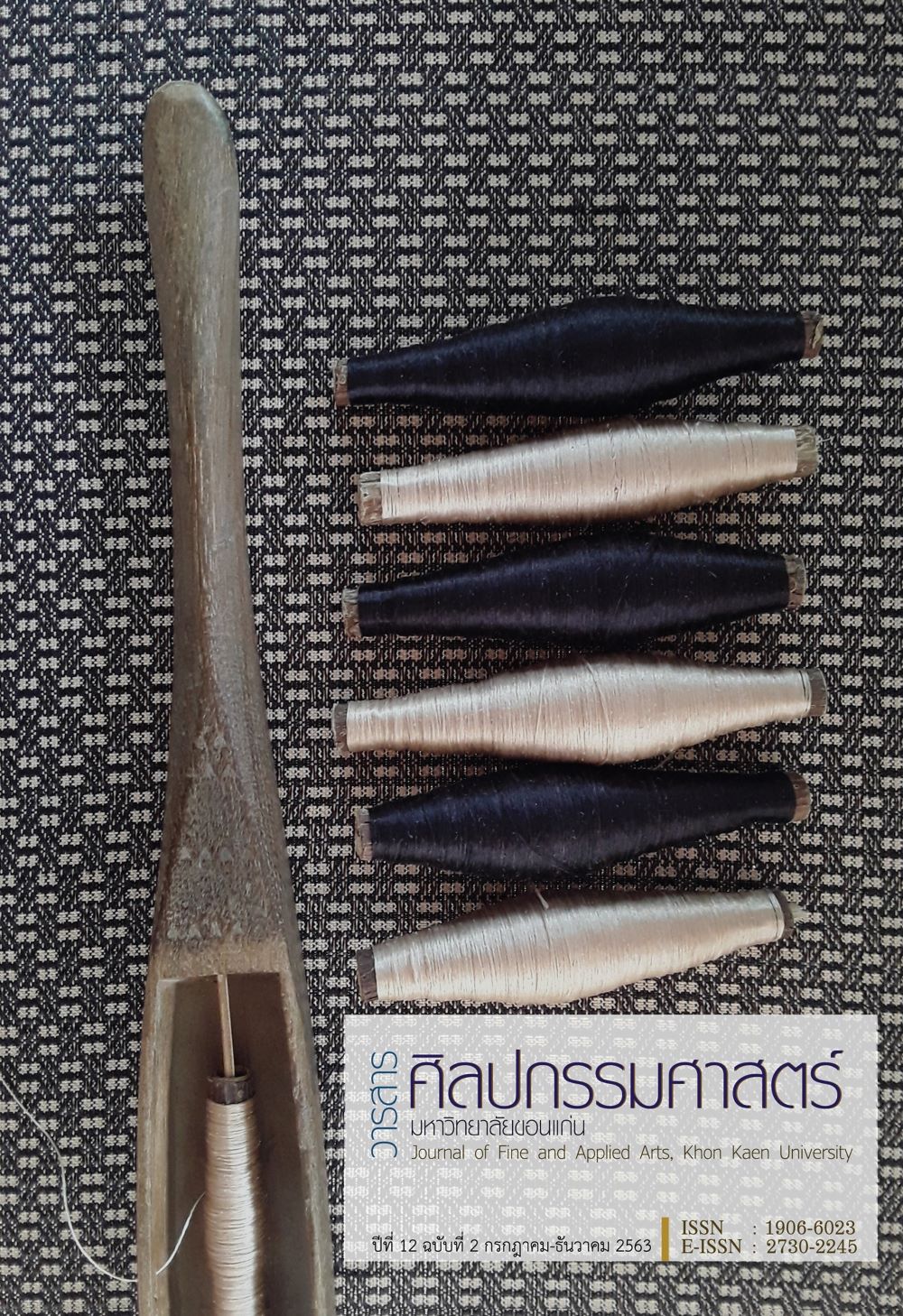A Development of Khim Teaching Module for Informal Education System
Main Article Content
Abstract
The purpose of this qualitative research was to develop a Khim teaching module for an informal education system and to find its efficiency in a qualitative way. The researcher invited 6 adult research participants aged between 21-65 years old to do private music lessons according to Khim teaching module design. The Khim teaching module has been developed and already passed the qualitative evaluation by 3 Thai music educators. The lessons in the teaching module included 4 private periods for 1 hour each. After the students had finished all the lessons, the researcher determined the teaching module’s efficiency from the student’s accomplishment and student development observation record which were assessed individually by 5 different music educators. The results revealed that all students were able to pass the researcher’s criteria in Khim playing and performing posture, short and long tone playing, duration, rhythm, fluency, and accuracy in performing the entire piece. Thus, all students were able to obviously developed themselves at a satisfactory level.
Article Details
Content and information in articles published in the Journal of Fine and Applied Arts of Khon Kaen University is regarded as the opinion and sole responsibility of the author(s) directly; therefore, editors are not obliged to agree to or share any responsibility with regard to the content and information that appears within these articles.
All articles, information, content, image, etc. that have been published in the Journal of Fine and Applied Arts of Khon Kaen University is the copyright of the Journal of Fine and Appllied Arts of Khon Kaen University. Any person or organization who wishes to distribute all or parts of the articles for further dissemination or other usage must first receive permission from the Journal of Fine and Applied Arts of Khon Kaen University before proceeding to do so.
References
ณรุทธ์ สุทธจิตต์. (2547). ประวัติดนตรีไทยศึกษา. กรุงเทพฯ: จุฬาลงกรณ์มหาวิทยาลัย.
ณรุทธ์ สุทธจิตต์. (2560). วิธีวิทยาการสอนดนตรี. กรุงเทพฯ: คณะครุศาสตร์ จุฬาลงกรณ์มหาวิทยาลัย .
นิมิตาภรณ์ ลับแล. (2543). การสร้างและพัฒนาชุดการสอนแบบศูนย์การเรียนเรื่องเครื่องดนตรีไทยสำหรับชั้นประถมศึกษาปีที่ 6. วิทยานิพนธ์ปริญญาศิลปศาสตรมหาบัณฑิต สาขาดนตรี บัณฑิตวิทยาลัย มหาวิทยาลัยมหิดล.
บุญธรรม ตราโมท. (2481). คำบรรยายวิชาดุริยางคศาสตร์ไทย. กรุงเทพฯ: กองทุนสมเด็จพระเทพรัตนราชสุดาฯ สยามบรมราชกุมารี สำนักงานคณะกรรมการส่งเสริมและประสานงานเยาวชนแห่งชาติ.
ประโมทย์ พ่อค้า. (2542). การพัฒนาชุดการสอนทฤษฎีดนตรีสากลดบื้องต้นผ่านทักษะปฏิบัติขลุ่ย รีคอร์เดอร์ในรายวิชาสำหรับครูประถมศึกษาของสถาบันราชภัฏ. วิทยานิพนธ์ปริญญาศิลปศาสตร มหาบัณฑิต สาขาดนตรี บัณฑิตวิทยาลัย มหาวิทยาลัยมหิดล.
พงษ์ศิลป์ อรุณรัตน์. (2554). ปฐมบทดนตรีไทย โครงการตำราและหนังสือ คณะอักษรศาสตร์ มหาวิทยาลัยศิลปากร. นครปฐม: โรงพิมพ์มหาวิทยาลัยศิลปากร.
มนตรี ตราโมท. (2538). ฟังและเข้าใจเพลงไทย. กรุงเทพฯ: ไทยเขษม.
ศิริพร ปัตตะพงษ์. (2543). ประสิทธิภาพชุดการสอนเรื่องการผสมเสียงผ่านทักษะการฟังสำหรับนักศึกษาสถาบันราชภัฏพิบูลสงคราม. วิทยานิพนธ์ปริญญาศิลปศาสตรมหาบัณฑิต สาขาดนตรี บัณฑิตวิทยาลัย มหาวิทยาลัยมหิดล.
สมคิด อิสระวัฒน์. (2543). การสอนผู้ใหญ่. กรุงเทพฯ: จรัลสนิทวงศ์การพิมพ์.
สุรางค์ โค้วตระกูล. (2559). จิตวิทยาการศึกษา. กรุงเทพฯ: สำนักพิมพ์แห่งจุฬาลงกรณ์มหาวิทยาลัย.
Cresswell, J. W. (2012). Educational research. Boston: Pearson education.


